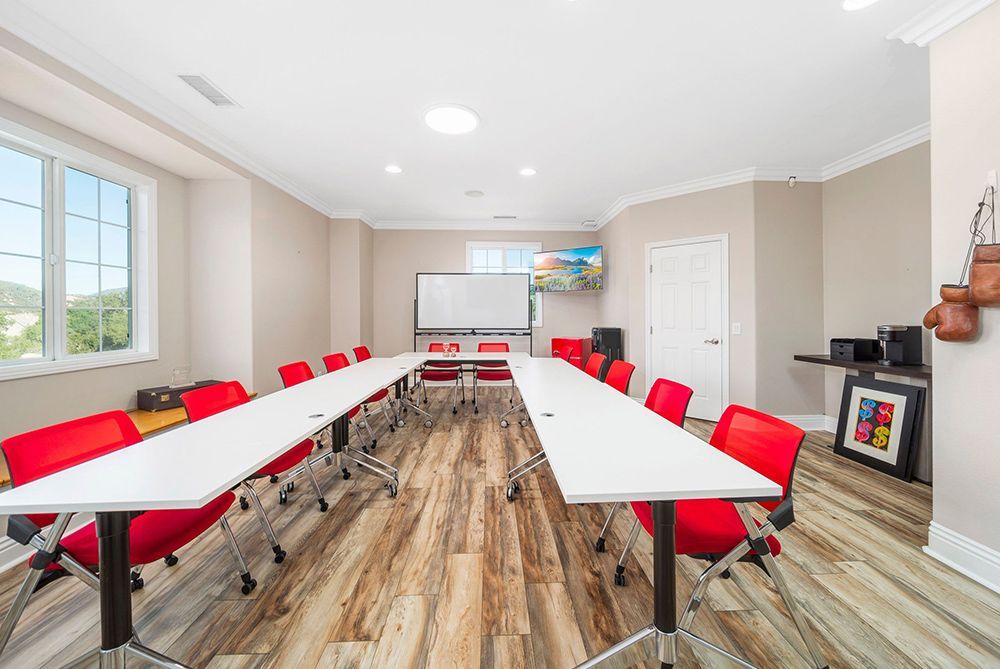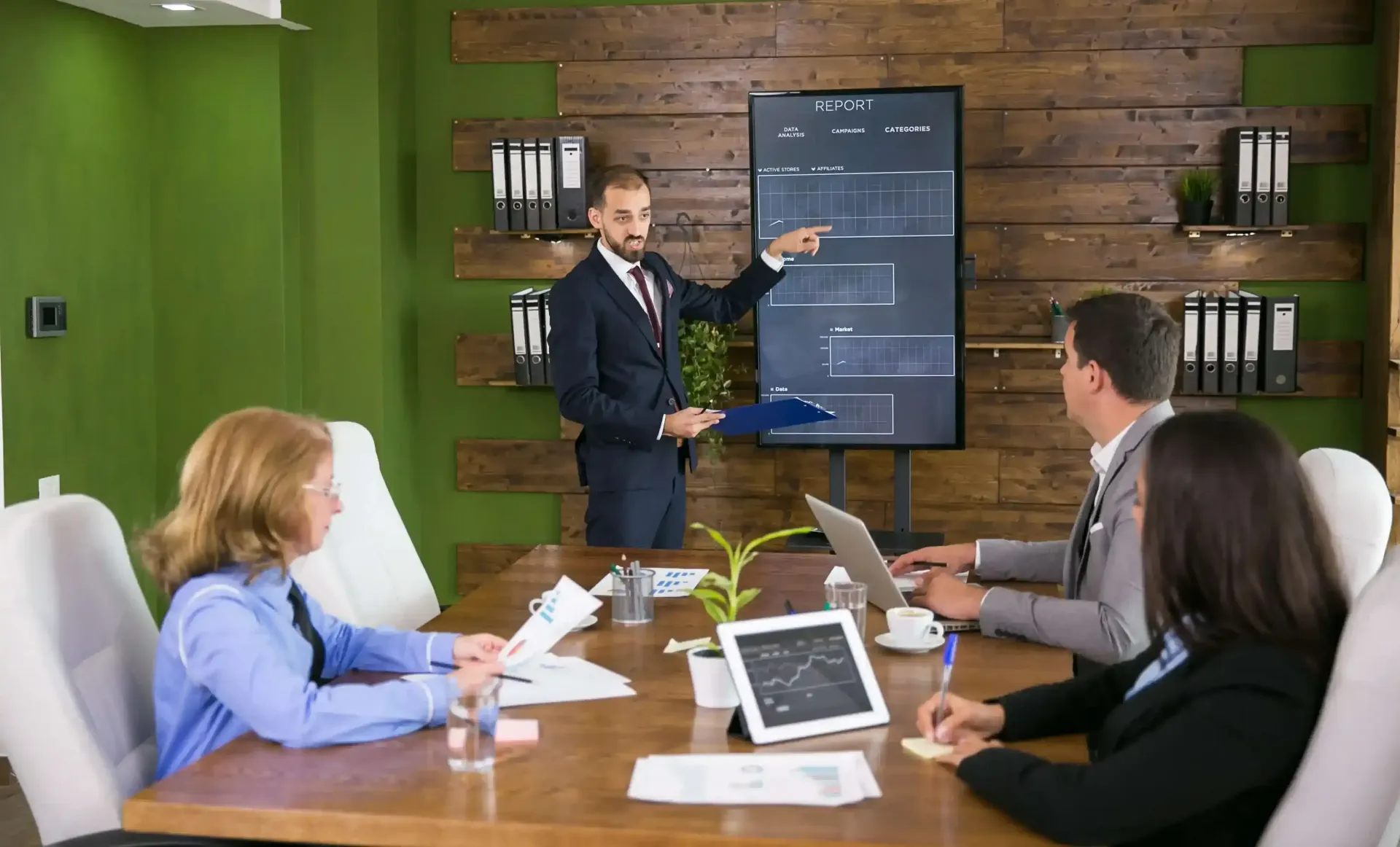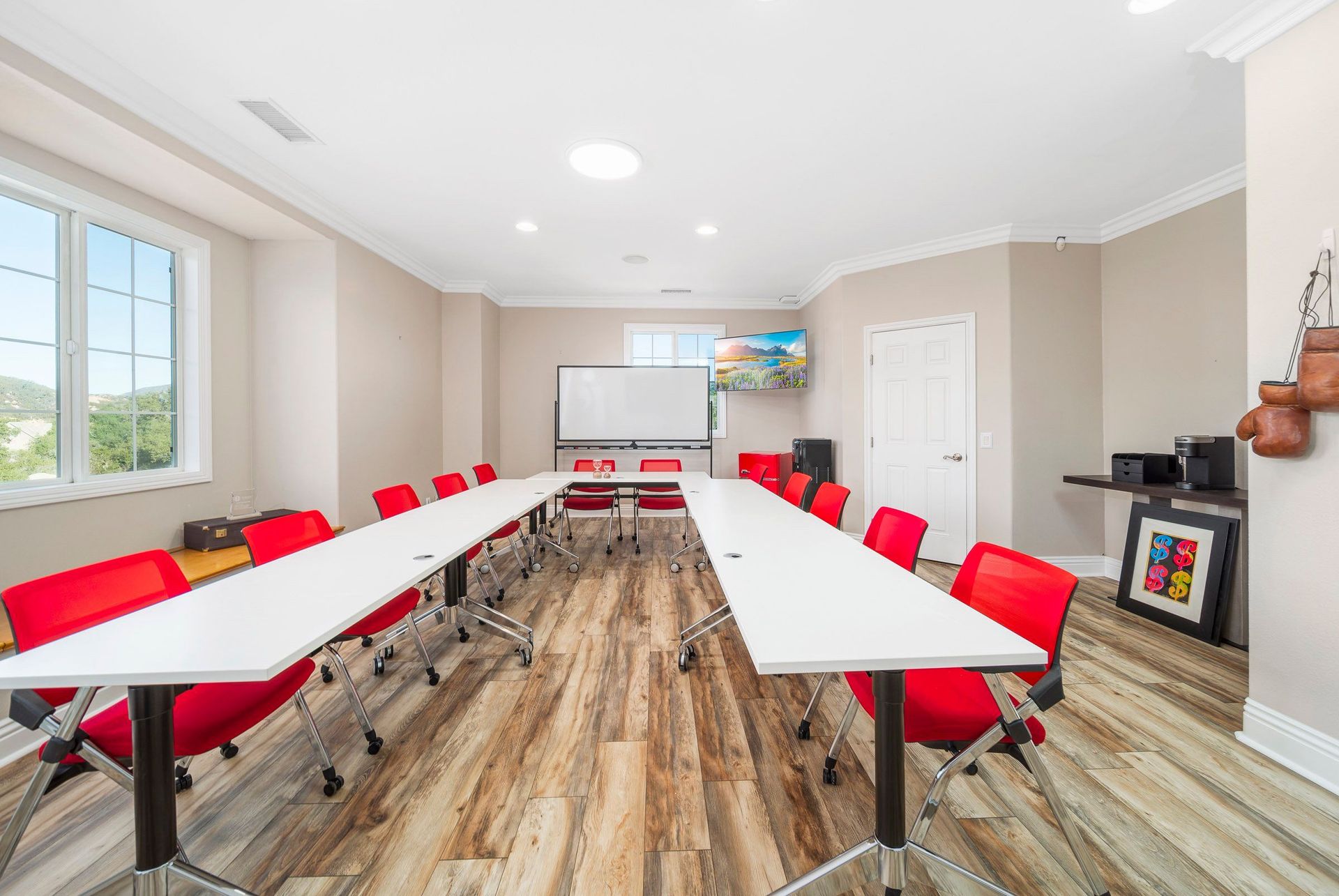How to Conduct a Business Meeting
Learn how to conduct effective business meetings with this comprehensive guide. Discover business meeting best practices, strategies, and techniques to lead productive meetings that drive your organization's success, from defining goals and objectives to managing time and fostering active participation. Improve collaboration, decision-making, and communication skills for more efficient and impactful meetings.
The Importance of Effective Business Meetings
Effective meetings are crucial for fostering communication and collaboration within an organization. They provide a platform for team members to share ideas, make decisions, and work towards common goals. Well-organized meetings can significantly enhance productivity, innovation, and team dynamics.
However, poorly conducted meetings can be unproductive and demotivating. Understanding the significance of how to run a meeting and learning how to conduct them efficiently is vital.
Defining the Goals and Objectives
Defining clear goals and objectives is essential before conducting business meeting. It ensures that all participants understand the meeting's purpose and are aligned with their expectations. Here are the steps to follow when defining goals and objectives:
- Identify the meeting's purpose.
- Set measurable objectives.
- Prioritize agenda items.
- Determine desired outcomes.
Preparing for the Business Meeting
Identifying the Meeting Purpose and Agenda
It is crucial to identify the purpose and create a well-defined agenda. This ensures that the meeting stays focused and productive. Consider the following steps:
- Determine the meeting's purpose.
- Create a comprehensive agenda.
Selecting the Right Participants
Selecting the appropriate participants for a meeting is essential for its success.
- Identify key stakeholders.
- Keep the group size manageable.
Scheduling and Time Management
Efficiently managing time is critical for a productive business meeting. Consider these factors when scheduling and managing time:
- Set a realistic meeting duration.
- Communicate the meeting schedule in advance.
- Start and end on time.
- Allocate time for each agenda item.
Creating an Engaging Meeting Environment
Choosing the Appropriate Meeting Space
Selecting a suitable meeting space is crucial for creating an engaging environment. Consider the following factors:
- Size and layout: Choose a space that comfortably accommodates all participants and allows easy movement and interaction.
- Amenities and facilities: Ensure the meeting space provides necessary amenities such as audio-visual equipment, whiteboards, and sufficient power outlets.

Arranging Audio-Visual Equipment and Technology
Proper arrangement of audio-visual equipment and technology enhances the meeting experience. Follow these guidelines:
- Test equipment beforehand: Ensure projectors, screens, microphones, and other audio-visual tools function correctly before the meeting.
- Arrange for easy accessibility: Position the equipment in a way that is easily visible and accessible to all participants.
Setting Up Comfortable Seating Arrangements
Comfortable seating arrangements contribute to a positive and engaged meeting environment. Consider these aspects:
- Adequate seating: Provide enough chairs for all participants, and ensure they are comfortable and ergonomically suitable.
- Consider seating arrangements: Opt for seating arrangements to encourage interaction and facilitate eye contact among participants.
The Estate at Oak Hollow
In the context of creating an engaging meeting environment, The Estate at Oak Hollow stands as an ideal venue. This exceptional property offers a stunning and spacious backdrop for various types of business meetings. With its sophisticated and adaptable spaces, cutting-edge audio-visual equipment, and abundant amenities, The Estate at Oak Hollow delivers a professional and immersive ambiance for professional business meetings.
The thoughtfully arranged comfortable seating and meticulous attention to detail ensure that participants can stay focused on the agenda and collaborate seamlessly. Whether a small team gathering or a large conference, The Estate at Oak Hollow provides a premier meeting environment that nurtures engagement and boosts productivity.
Sending Invitations and Confirming Attendance
Crafting Clear and Concise Meeting Invitations
Clear and concise meeting invitations help participants understand the purpose and logistics of the meeting.
- State the meeting purpose
- Provide essential details
Utilizing Reminder Strategies
Sending reminders helps ensure participants remember the meeting and come prepared.
- Send timely reminders
- Use multiple communication channels
Managing RSVPs and Confirmations
Effectively managing RSVPs and confirmations helps with meeting logistics. Consider these approaches:
- Request timely responses
- Follow up on non-responses
Conducting Pre-Meeting Research and Preparation
Gathering Relevant Data and Information
Thorough research and gathering relevant data and information contribute to a well-informed meeting.
- Identify required information: Determine the data and information needed for the meeting's discussions and decision-making.
- Collect and organize materials: Gather the necessary documents, reports, statistics, or other resources supporting the meeting's agenda.
Distributing Materials in Advance
Providing meeting materials in advance allows participants to review and come prepared. Consider these actions:
- Share materials timely: Distribute meeting materials well in advance to give participants sufficient time for review and analysis.
- Organize materials effectively: Present the materials in a logical and easily understandable format to facilitate participants' comprehension.
Setting Expectations for Participants
Establishing clear expectations ensures that participants are prepared and engaged.
- Communicate meeting objectives
- Outline individual responsibilities
Leading the Business Meeting Effectively
Setting the Tone and Objectives at the Start
Setting the tone and objectives at the beginning is paramount when leading a meeting effectively. Consider these actions:
- Welcome and introductions: Create a welcoming atmosphere and introduce participants to foster collaboration.
- State the meeting objectives: Communicate the meeting's objectives to align participants' expectations and set the direction for the discussion.

Managing Time and Staying on Agenda
Efficient time management ensures that the meeting progresses smoothly and stays on track.
- Establish a time frame: Set a designated time frame for each agenda item and adhere to it strictly to avoid unnecessary delays.
- Delegate timekeeping: Assign someone to keep track of time and provide gentle reminders when moving between agenda items.
Encouraging Active Participation and Discussion
Active participation and discussion foster engagement and generate valuable insights. Consider these approaches:
- Encourage open dialogue: Create a safe and inclusive environment that encourages participants to share their thoughts, opinions, and ideas.
- Facilitate discussion: Use appropriate facilitation techniques, such as asking open-ended questions or encouraging different perspectives, to stimulate meaningful conversations.
Facilitating Productive Discussions
Practicing Active Listening Skills
Active listening skills promote effective communication and understanding during discussions. Consider these techniques:
- Give full attention: Focus on the speaker, maintain eye contact, and avoid distractions to demonstrate attentive listening.
- Reflect and paraphrase: Repeat or rephrase critical points to confirm understanding and show that you are actively engaged in the conversation.
Encouraging Diverse Perspectives
Encouraging diverse perspectives fosters innovation and comprehensive decision-making. Consider these approaches:
- Create a safe space: Establish an environment where participants feel comfortable expressing their opinions, even if they differ from the majority.
- Ask for input: Encourage participants to share their viewpoints, ideas, and experiences to ensure a wide range of perspectives are considered.
Handling Conflicts and Disagreements
Addressing conflicts and disagreements constructively maintains a productive atmosphere. Follow these strategies:
- Foster open dialogue: Encourage respectful and constructive discussion, allowing conflicting views to be expressed while focusing on finding common ground.
- Mediate when necessary: Step in as a neutral facilitator to mediate conflicts, ensuring everyone can be heard and guide the conversation towards resolution.
Making Data-Driven Decisions
Analyzing Relevant Data and Reports
Thoroughly analyzing relevant data and reports informs informed decision-making. Consider these actions:
- Gather and organize data: Collect reliable data and reports that are relevant to the decision at hand.
- Evaluate and interpret data: Analyze the data to identify trends, patterns, and insights to inform decision-making.
Weighing Pros and Cons of Different Options
Weighing the pros and cons of different options allows for a comprehensive evaluation. Follow these steps:
- Identify potential options: Generate a list of feasible alternatives or solutions.
- Evaluate advantages and disadvantages: Assess the potential benefits and drawbacks of each option, considering various factors such as cost, feasibility, and impact.
Utilizing Tools for Decision-Making
Using decision-making tools can help streamline the process and ensure a systematic approach. Consider these tools:
- Decision matrices: Create a matrix to evaluate and compare options based on predefined criteria.
- SWOT analysis: Conduct a SWOT analysis (Strengths, Weaknesses, Opportunities, and Threats) to assess the internal and external factors affecting each option.
Effective Presentation and Communication
Using Visual Aids and Multimedia
Visual aids and multimedia enhance presentations and facilitate understanding.
- Choose appropriate visuals: Select charts, graphs, images, or videos that support and clarify the key points of your presentation.
- Use multimedia effectively: Incorporate multimedia elements like slideshows or videos to engage and captivate the audience.
Crafting Clear and Concise Messages
Clear and concise messages ensure effective communication. Follow these guidelines:
- Focus on critical points: Distill your message to its essence, highlighting the most important information for the audience.
- Use simple language: Use plain language and avoid jargon or technical terms that might confuse or alienate the audience.
Tailoring Communication to the Audience
Tailoring your communication to the audience enhances comprehension and engagement. Consider these approaches:
- Understand the audience: Research your audience's background, interests, and needs to tailor your message accordingly.
- Adapt communication style: Adjust your tone, language, and examples to resonate with the audience and make the information relatable.
Assigning Action Items and Responsibilities
Summarizing Meeting Decisions and Actions
Summarizing meeting decisions and actions ensures clarity and alignment. Consider these actions:
- Provide a summary.
- Clarify responsibilities.
Clarifying Deadlines and Deliverables
Setting clear deadlines and deliverables promotes accountability and progress.
- Establish deadlines
- Specify deliverables
Ensuring Accountability and Follow-Up
Ensuring accountability and follow-up maintains momentum and progress. Consider these steps:
- Track progress: Regularly check in on the assigned action items and monitor progress toward completion.
- Follow up on commitments: Hold individuals accountable by following up on their assigned tasks and ensuring they are fulfilled.
Managing Virtual Business Meetings
Choosing the Right Virtual Meeting Platforms
The appropriate virtual meeting platform is crucial for a smooth and effective meeting. Consider these factors:
- Evaluate features: Assess the platform's capabilities, such as video conferencing, screen sharing, chat functionality, and recording options, to ensure they align with your meeting requirements.
- Consider accessibility: Choose a platform that is easily accessible for all participants, considering factors like device compatibility, internet connectivity, and ease of use.

Ensuring Technical Readiness and Troubleshooting
Preparing for technical issues and troubleshooting minimizes disruptions during virtual meetings. Follow these steps:
- Test technology beforehand
- Provide technical support
Engaging Remote Participants Effectively
Creating an engaging experience for remote participants is essential for their active participation. Consider these strategies:
- Encourage active participation
- Utilize interactive features
Handling Meeting Challenges and Disruptions
Dealing withLatecomers and Time Overruns
Addressing punctuality and time management ensures meetings stay on track.
- Set expectations
- Start on time
Addressing Dominating Participants
Managing dominating participants ensures balanced participation and diverse input. Consider these strategies:
- Encourage equal participation: Set ground rules for equal opportunity for all participants to speak and contribute.
- Direct questions and comments: Address dominant participants directly and redirect the conversation to allow others to participate and share their perspectives.
Managing Unexpected Interruptions
Handling unexpected interruptions maintains focus and productivity. Consider these actions:
- Stay composed: Maintain composure and address the interruption calmly and professionally, minimizing its impact on the meeting flow.
- Establish guidelines: Establish guidelines and communication protocols to manage interruptions effectively, such as muting participants when necessary or using virtual hand-raising features.
Wrapping up the Business Meeting
Summarizing Key Takeaways and Decisions
Summarizing key takeaways and decisions ensures everyone is aligned before concluding the meeting.
- Recap key points: Summarize the main discussion points, decisions made, and actions agreed upon during the meeting.
- Clarify next steps: Clearly outline each participant's action items, responsibilities, and deadlines to ensure everyone is on the same page.
Soliciting Feedback and Suggestions
Seeking feedback and suggestions allows for continuous improvement of future meetings. Consider these strategies:
- Create a feedback loop: Encourage participants to share their thoughts, suggestions, or concerns about the meeting format, agenda, or overall effectiveness.
- Act on feedback: Consider the feedback received and implement relevant improvements in future meetings to enhance the experience for all participants.
Expressing Gratitude and Closing on a Positive Note
Expressing gratitude and closing the meeting positively fosters goodwill and leaves a lasting impression. Consider these actions:
- Express appreciation: Thank participants for their contributions, time, and engagement during the meeting.
- Reinforce positivity: Highlight the positive outcomes and the value of collaboration, emphasizing the shared commitment towards achieving common goals.
Post-Meeting Follow-Up and Documentation
Sending Meeting Minutes and Action Points
Sending meeting minutes and action points ensures clear documentation and accountability.
- Prepare accurate meeting minutes: Compile comprehensive meeting minutes that capture the critical discussion points, decisions, and assigned action items.
- Share meeting minutes promptly: Distribute them to all participants, ensuring they can access the documented information.

Evaluating Meeting Success and Performance
Evaluating meeting success and performance provides insights for future improvements.
- Assess meeting objectives: Review whether the objectives were met, assessing the outcomes and results achieved.
- Gather feedback: Seek feedback from participants regarding the meeting's effectiveness, engagement levels, and overall satisfaction.
Updating Relevant Records and Systems
Updating relevant records and systems ensures accurate and up-to-date information. Consider these steps:
- Document decisions and actions: Record the meeting decisions, action items, and other relevant information in the appropriate records or systems.
- Communicate updates: Share updates with relevant stakeholders or teams to ensure the necessary follow-up actions are implemented.
Continuous Improvement and Learning
Incorporating Feedback into Future Meetings
Continuous improvement relies on feedback integration. Consider these actions:
- Collect feedback: Regularly seek input from participants about their meeting experience, areas for improvement, and suggestions for future enhancements.
- Analyze feedback: Carefully review and analyze the input, identifying common themes and actionable insights to inform future meeting planning.
Implementing Best Practices and Strategies
Implementing best practices and strategies enhances meeting effectiveness. Consider these approaches:
- Research industry standards: Stay informed about best practices in meeting management, facilitation techniques, and communication strategies to incorporate into your meetings.
- Experiment and adapt: Try new approaches, techniques, or technologies to refine your meeting processes and optimize participant engagement continuously.
Staying Updated with Meeting Trends and Technology
Keeping up with trends and technology ensures your meetings remain relevant and efficient. Consider these actions:
- Stay informed: Regularly research and stay updated with the latest trends, tools, and technologies to enhance virtual or in-person meeting experiences.
- Explore new tools: Experiment with new meeting platforms, collaborative tools, or communication software that can streamline meeting processes and foster collaboration.
Conclusion
Effective business meeting strategies are essential for collaboration, decision-making, and achieving goals. You can conduct efficient meetings by following business meeting tips like setting clear objectives, facilitating engagement, and leveraging technology.
Embracing continuous improvement and feedback ensures ongoing refinement. With these skills, you can drive successful meetings, foster collaboration, and contribute to organizational success.





Quick Links
Contact Details
Phone: (951) 252-3001
Site by Spearlance


